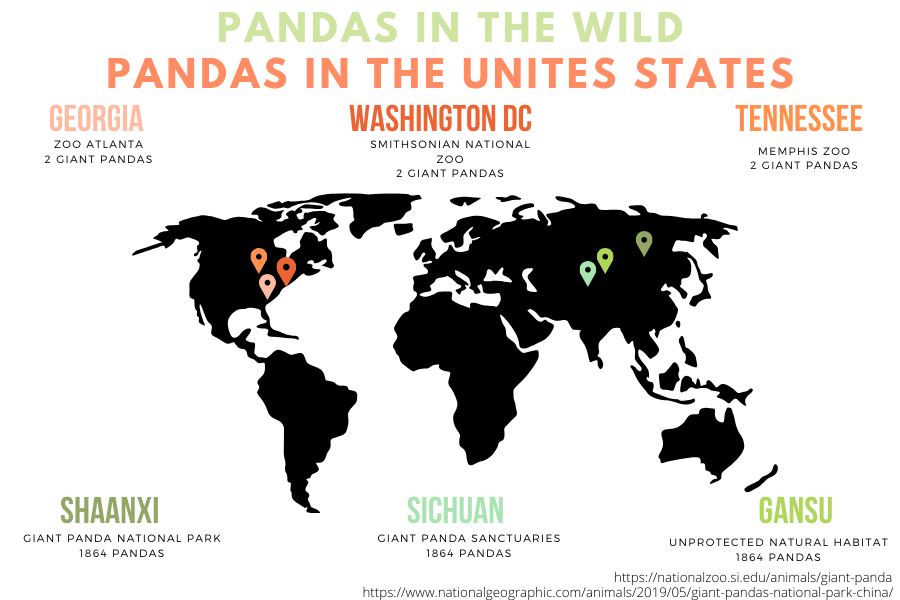Your donation will support the student journalists of Carlsbad High School. Your contribution will allow us to purchase equipment and cover our annual website hosting costs.



Tian Tian lounges around during nap time. Tian Tian is the Smithsonian National Zoological Park’s male giant panda on loan from China.
The stories behind giant pandas in San Diego and Washington D.C.
November 22, 2019
At first glance, San Diego and the nation’s capital seem like polar opposites. The former is commonly regarded as the chill heart of the country with surfers and fish tacos in abundance while the latter connotes mile-a-minute politicking and a dark underbelly of corruption. However these two cities share at least one thing in common: internationally renowned zoos. A centerpiece of both these institutions was the giant panda exhibits, until the San Diego Zoo lost theirs back to China in May. The Smithsonian National Zoological Park still hosts two pandas but sent four year old cub Bei Bei back to China, as per contractual agreement. With these animals holding a special place in the hearts of locals of both cities and being frequently covered by the media, we decided to look into the stories behind them.
The Wolong Giant Panda Research Center has developed relationships with zoological parks across the globe. The United States is one of few countries that have established trade deal with the Chinese government to lease out the pandas to zoos. This agreement was set to ease the giant panda species out of endangerment and create ties between the two governments. Although this process has proved successful, the pandas are facing a period of uncertainty.
Under contract, any offspring produced by the leased pandas is required to return to China when they turn four years of age. In the Smithsonian Zoo, three pandas have been returned to the reserve over the course of giant panda history in D.C., the most recent being the beloved Bei Bei.
“I love pandas because they are so cute and cuddly like big bears they also are big animals that only eat plants which is pretty cool,” senior Genna Esserman said. “I think that they shouldn’t be taken out of our zoos because they are great animals that people rarely have a chance to see in real life.”
At the zoo, caretakers fear their adult pandas may be at stake to be sent to China after the removal of pandas in the San Diego Zoo. Bai-Yun (28) and Xiau Liwu (7) were expectedly returned after the trade deal expired with China. As the pandas will continue to reside in D.C. through 2020, trade will be negotiated to settle where they will continue living.
“The agreements are pretty clear that we have to give them back at the end of the lease, but I don’t think the reasons are particularly good,” San Diegan Jaime Ryan said. “The panda lease renewal is likely being complicated by our ongoing trade war with China. It’s unfortunate that politics have an influence in such a non-political process.”
The relationship between China and the United States has lead the species to upgrade from “endangered” to “vulnerable”. By renewing this agreement, there is potential to continue breeding and increasing the amount of giant pandas.
“I think it’s great that the zoos and governments have worked together in order to ensure that the giant panda species does not become more endangered,” senior Caleb Amory said. “However I do see a fault in the alliance as the giant pandas who are artificially bred are only capable of living in captivity.”
The leased pandas have changed how Americans see these animals, not as monstrous predators but as friendly creatures. In San Diego, profuse efforts of advertisements led people to put forth more funding and support for the species.
“It was a pretty big loss for San Diego,” Ryan said. “We had invested a lot in infrastructure and marketing, and now it has essentially gone to waste. It feels like a missed opportunity to continue to generate interest in panda conservation in visitors to one of the world’s most famous zoos. The loans of pandas to the US have undoubtedly increased conservation efforts and made pandas one of the most beloved endangered species. They actually get an out-sized portion of donations compared to other animals.”
Californian Lily Ryan visits the National Zoological Park. As a panda fan, Ryan was saddened that both the Smithsonian and San Diego (the largest zoo in California) zoos had lost pandas.
The recent departure of the Smithsonian National Zoo’s baby giant panda, Bei Bei to its origin country of China has left both Washington D.C. natives and visitors alike dispirited. Although there are panda bears still remaining at the zoo, Bei Bei’s absence has impacted animal lovers across the nation.
Eight year old zoo-goer, Lily Ryan expresses her love for pandas and the flair they add to the zoo. Saying #ByeByeBeiBei was hard on the younger animal loving population.
“I’m sad about the pandas,” Ryan said. “They are really funny and soft.”
Although Bei Bei is no longer a resident of D.C., he is still alive and well. As a Californian and panda enthusiast, Ryan hopes to see some of these furry friends in the San Diego Zoo sometime again in the near future.
“I think they are having fun (in China),” Ryan said. “If there is another baby panda, it should go to the San Diego Zoo.”

Your donation will support the student journalists of Carlsbad High School. Your contribution will allow us to purchase equipment and cover our annual website hosting costs.


